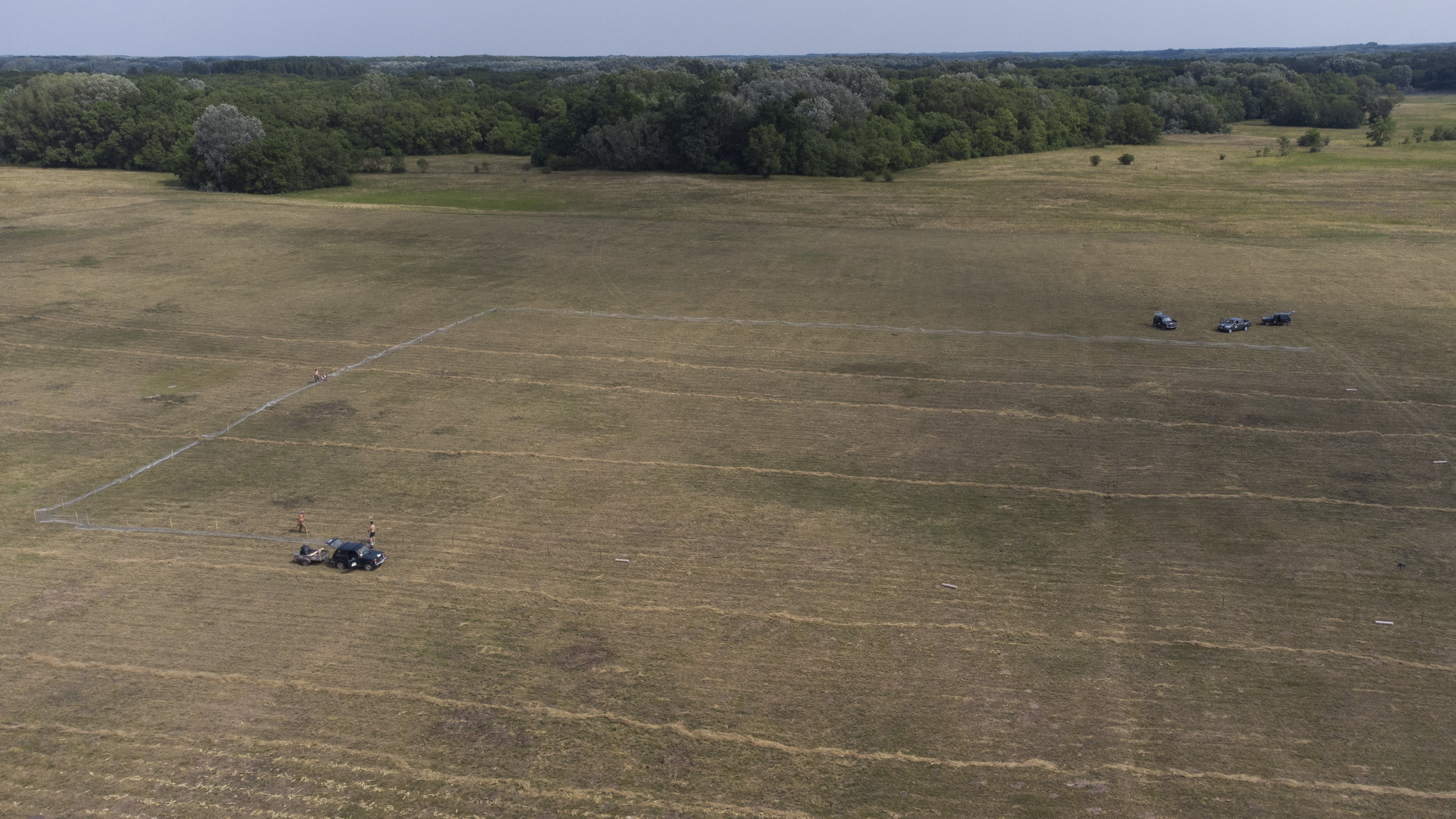2021
Type of resources
Available actions
Topics
Keywords
Contact for the resource
Provided by
Years
Formats
Representation types
Update frequencies
-
measurements of soil temperature at weather station HEK (Hochebenkar) measuremnts at 15 cm depth sensor: thermistor soil temperature probe 107, Campbell Scientific data: 10 min. average
-
None
-

The site is a revitalized young steppe habitat patch, dominated by fescue (Festuca rupicola). The average altitude is around 100 m. The site is a grazing spot and it was recently used for the reintroduction of the European ground squirrel (Spermophilus citellus) to the area after 70 years. Other important species present at the site include Vojvodina blind mole rat (Nannospalax (leucodon) montanosyrmiensis) and Spring meadow saffron (Bulbocodium versicolor).
-
We provide long-term data for the water level of Srebarna Lake (2010-2020).
-
This dataset includes results obtained from a one-year monitoring survey (from May 1984 to April 1985) of physico-chemical parameters in marine water of the Mar Piccolo of Taranto. Sampling was carried out monthly, for a total of 12 months in fifteen stations of the first inlet and ten stations of the second inlet of the Mar Piccolo of Taranto. Marine water was collected at three different depth in each sampling site: surface, middle and bottom. The selected parameters of this study were: pH, temperature, dissolved oxygen, salinity, ortho-phosphate, ammonia, nitrites and nitrates. Monthly monitoring survey in marine water represents a useful tool to evaluate seasonal changes in water parameters. Nutrients in fact represent the major sources of nutrition for phytoplankton growth in seawater (with sunlight and inorganic carbon) and increased nutrient inputs could lead to an increase in production and possible eutrophication phenomena
-
The study of the physical–chemical parameters in the Mar Piccolo of Taranto, begun since the first years of the last century. In these selected studies physical–chemical characterization of marine water and sediments were carried out in the first and second inlet of the basin. In marine water, temperature, salinity, dissolved oxygen, ammonia, nitrites, nitrates, and orthophosphates were determined. In sediments physical–chemical parameters included: water content, organic matter, total nitrogen and total phosphorous, pH, red-ox potential and grain size classification. Moreover, different micropollutants were also evaluated: heavy metals (Hg, Cd, Pb, Cr, Cu, Ni, Zn, Al V and Fe) and Arsenic, polycyclic aromatic hydrocarbons (PAHs), polychlorobiphenyls (PCBs), organochlorinated pesticides and organotin compounds. These studies demonstrate the important role of water monitoring studies in the semi-enclosed basin of the Mar Piccolo with lagoon features, characterized also by mussel farming activities. Moreover, in addition to the trophic conditions of the area, data obtained from sediments characterization allow us to evaluate the possible contaminants transfer along the food chain, in order to protect human health by consumption of seafood products
-
The aim of the dataset is studying the effect of land-use on the plant species richness of different dry habitats. The field site network consists of 16 sites, of 5 km 5 km each, representing all major land-use/land cover types characteristic to the region (agricultural land, abandoned agricultural land, tree plantation, semi-natural grassland, and forest) in varying proportions. The first survey was made between 2006-2008, the second between 2019- 2021.
-
Biomass (Aboveground biomass) data from ICP IM Integrated monitoring program, subprogram BI. IM station Gårdsjön SE04, data from 1991-2015
-
The dataset contains records of Fishes (Pisces) collected in the lower valley of River Sabor (NE Portugal) in the scope of the long-term Ecological Monitoring Program (PME) of the Baixo Sabor Hydroelectric Dams (AHBS), promoted by EDP – Energias de Portugal, S.A, to evaluate the impacts of dam construction in the fish communities and water quality of the river. This dataset refers to the year of 2012, during the construction process. Fishes were captured in 16 sampling stations by electrofishing (with restitution) in speing and autumn of 2012. A total of 2214 records of 11 species and one genus were obtained.
-
We monitor fine-scale grassland dynamics in permanent plots in 16 grassland patches at an annual basis since 1999. Patches dominated by either Stipa borysthenica or Festuca vaginata were selected in 1999 in the Fülöpháza Sand Dunes, in the Kiskunság National Park. In each patch, we have one control plot and two plots that were experimentally disturbed (digging or cutting) in 1999. Percentage cover of all vascular species were visually estimated in each year. During the study period, several drought events occurred in the area (2000, 2003, 2012, 2013), which affected species dominance. Drought caused high mortality in both dominant species, but Stipa recovered faster after drought events and gained importance. Years with average or above-average precipitation favoured Festuca recovery.
